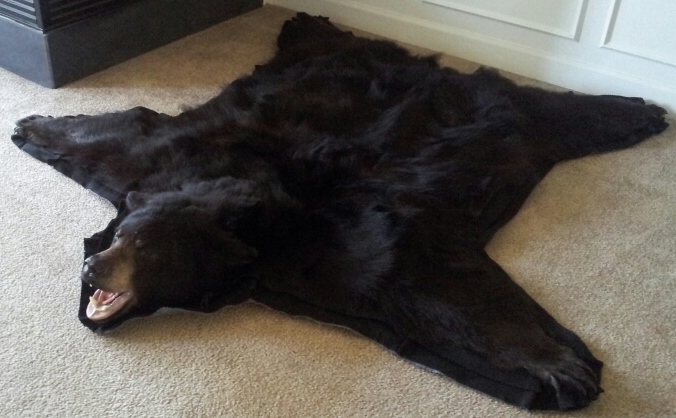When I opened the door and saw the large box, I felt mixed emotions. I knew what was in the box, but I also knew how much this latest addition to my den room had cost me.
I opened it up and found the beautifully preserved bear rug I had ordered the year before. This bear wasn’t going to break any records, but it sported one of the thickest, fullest, black coats I’d ever seen. I wanted the rug to preserve the memory of the hunt and pay respect to this magnificent animal.
Months later, I received notice that the outfitter would need more than the agreed-upon price due to an apparent misunderstanding on my part. Perhaps I did misunderstand, and after all, it was still a reasonable price for the quality of work this taxidermist was known for. But then things went south in a hurry. Weeks later, I received an e-mail stating that the regulations for transporting bear hides had changed after the rug was already in transit, and that I would have to employ a broker to have it transported across the border, as well as the remaining 2,000 miles. Then the call came from the broker, asking for another three-figure fee that set the price tag way beyond what I had originally expected to pay.
The hard lesson learned in all of this is that my new bear rug—although beautiful and a great addition to my den room—ended up costing more than the hunt itself. A recent Bull Moose shoulder mount ended up costing me only half of what the bear rug did. I understand the costs associated with making full-hide rugs; tanning isn’t cheap, and that cost is passed directly to the hunter. But it’s an expense that’s far more painful when it comes unexpectedly.
Hunters on their first trip for a species should know how much it will cost to preserve their trophy before they squeeze the trigger. In most cases, it will be cheaper to get a bear or cougar full-body mounted than to have a rug made out of the same cape. The expenses are much higher if and when your trophy has to cross a border.
I could easily list off “ten things to remember,” but the best advice I can give is to simply do your homework, and don’t assume (like I did) that the mount won’t cost you very much. In fact, outside of the outfitter’s fee, it could be the most expensive component of your trip. Last but not least, don’t expect the taxidermist to give you full disclosure on all the fees you might incur—it’s your job to ask and know this before you sign on the dotted line.
This isn’t to suggest that you should allow the price of taxidermy to discourage you from the hunt. There are plenty of options that preserve trophy animals without breaking the bank. Explore these options before you leave home, so the taxidermy bill doesn’t ruin a special memory or keep you out of the woods the following season.
Andrew Coffey is an avid hunter and owner of Wild Pursuits Hunting Consultants, a full-service North American booking agency. He is also an outdoor blogger and columnist and a member of several field and pro-staffs. Contact Andrew with questions or comments.









![The Best Deer Camp Chili [VIDEO] Deer Chili Ingredients, Tomatoes, Chili Spices](/wp-content/uploads/2015/10/Deer-Chili-Deer-Camp-Recipe-218x150.jpg)








![How to Call Elk Early in the Season [VIDEO]](/wp-content/uploads/2016/08/byers003-218x150.jpg)




![Idiots Disturb Hunter: How Would You Have Handled It? [VIDEO]](/wp-content/uploads/2015/10/DSC00110-e1474487693878-100x70.jpg)
![Albino Buck Shocked to Shed His Antlers [VIDEO]](/wp-content/uploads/2015/10/AlbinoDeer-100x70.jpg)